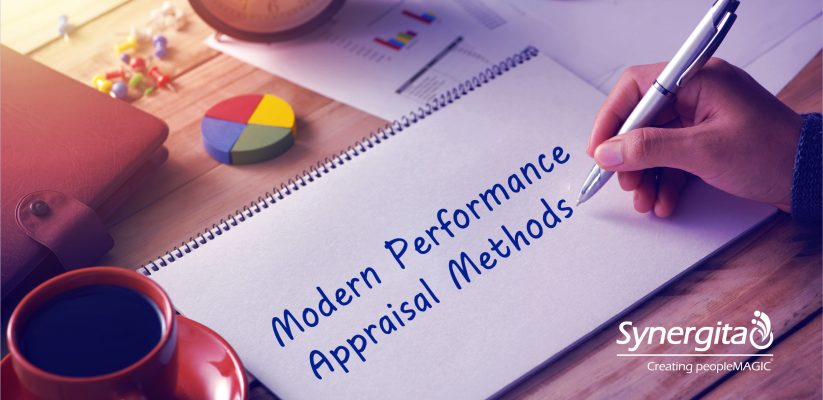7 Modern & Actionable Performance Appraisal Methods
Performance appraisals are an integral part of running a successful enterprise. It is a process of evaluating an employee’s performance to identify ways of improving performance. Traditional performance appraisal methods are proving to be no longer effective as they focus on past performance rather than improving future performance. By adapting modern performance appraisal methods through a comprehensive performance management system, you can leverage performance management software to yield beneficial results. This article covers seven modern and actionable performance appraisal methods that you can implement in your enterprise with great effect.
1. Management by Objective (MBO)
In this technique, supervisors and employees cooperate to distinguish, plan, arrange, and convey objectives for progress. The manager recognizes the ideal goals to be accomplished, providing the worker with areas of responsibility and expected results. Over regular meetings, the supervisor and employee talk about the headway made. Your enterprise can then involve these proportions of progress as a guide for estimating the commitment level of your employee.
While helpful in deciding productivity and efficiency, this interaction typically underlines tangible outcomes. Consequently, intangible parts of an employee’s performance, for example, their relational abilities or work commitment, frequently go disregarded.
2. Behaviorally Anchored Rating Scale (BARS)
This strategy is often considered one of the best, as it brings out both the subjective and quantitative advantages of the performance appraisal process. In the Behaviorally Anchored Rating Scale (BARS) framework, the employer compares employee performance with specific behavioral examples secured to mathematical evaluations.
Since this technique gets to both quantitative and subjective types of estimation while additionally integrating intangible characteristics of workers into the rating framework, BARS prevails with regards to giving clear guidelines, further developing feedback, and providing accurate and consistent performance evaluation. Its essential disadvantage is that when done physically, it risks being skewed by biases brought about by predisposition.
3. Critical Incident Method
In this technique, your enterprise assesses a worker in light of specific occasions, known as critical incidents, in which the employee either succeeded hugely or failed in a given task. All through the cycle, the evaluator keeps a computerized or actual diary in which they store the data from the various occurrences.
This interaction, though manually demanding, is helpful for the singular growth of individual employees. By keeping definite records of both the positive and opportunity area achievements of a worker’s career growth, your enterprise can give point-by-point data in their feedback, which leads to the possibilities of improvement later on. Performance management tools and techniques allow you to document and access this data easily to reduce manual efforts through automation.
4. Assessment Center Method
The assessment center method helps survey employee work in socially related circumstances. Employees are approached to partake in situational practices like workgroups, reenactments, role-playing exercises, etc. These exercises intend to feature their possible outcomes and success in different jobs bearing different roles and obligations.
While this interaction is valuable in understanding the worker’s personal characteristics, it can likewise bring about an undesirable rivalry between employees. Similarly, it can possibly bear unfavorable consequences for underperforming employees because of the social nature of the testing.
5. Psychological Appraisals
This strategy is beneficial while deciding the hidden potential of employees since it centers around assessing a worker’s future performance instead of the consequences of their past work. In this performance management solution, qualified clinicians direct an assortment of tests on workers, including in-depth interviews, mental tests, and private conversations. These tests are meant to distinguish an employee’s emotion, intellect, and other related qualities that could influence their future performance in your enterprise.
Although this strategy is thorough and valuable, it can be a sluggish, complex, and expensive cycle. Further, the nature of the outcomes pivots upon the psychologist who regulates the strategy and an assortment of external influences that might affect the worker during testing.
6. Human-Resource (Cost) Accounting Method
This cost accounting technique includes examining an employee’s performance through the financial advantages they provide to your enterprise. This estimation is typically obtained by contrasting the expense of retaining an employee to the economic advantages they provide your enterprise.
This performance appraisal method considers many elements, including unit-wise average service value, overhead cost, quality, relational connections, etc. Its essential downside is its high reliance on the nature of cost and benefits analysis and the reviewer’s memory.
7. 360-Degree Feedback
It is commonly held that annual performance appraisals are not very effective. Employees need regular and consistent feedback provided by co-workers, managers, and leaders in the form of 360-degree feedback to remain motivated in learning from the results of appraisals.
In the 360-degree feedback strategy, different raters are engaged in assessing an employee’s performance. All specialists within your enterprise gather feedback. They communicate with the subject, including bosses, companions, subordinates, and clients. Typically, this feedback is gathered by an internet-based survey, planned explicitly for this reason. At the point when each employee in your enterprise assesses their chiefs, peers, clients, providers, and partakes in standard self-assessment, it guarantees effective and transparent performance analysis.

Conclusion
Every performance appraisal method comes with its advantages and disadvantages. It is advisable to use effective methods for your particular situation to maximize the benefits. A comprehensive performance management solution involves using diverse tools and techniques to have a well-rounded and accurate evaluation of your employees’ performance. By shifting the focus from the past to future performance, you encourage your employees and ensure the consistent growth of your enterprise through employee performance that improves with time. Using a combination of the methods listed in this article, you are guaranteed to have a successful solution to enhance your employee engagement and performance.

